Genre: Platformer Developer: Sonic Team Publisher: Sega of America Players: 1 Released: 2011
It’s almost too hard to believe, but it’s been twenty years since a certain blue hedgehog first hit upon the video game scene and revolutionized an entire genre. It was in 1991 when Sonic had his first adventure and went toe-to-toe against Dr. Robotnik for the first time in a colorful and speedy 16-bit platformer. Old-school gamers fondly remember those days, when platforming was just simple, straightforward and fun – no big cast of characters, no emphasis on exploration, and hardly a story in sight; it was sort of a silent era of video games, where characters didn’t talk and action was more important than plot lines.
Since then, a lot has changed. Several generations of consoles have come and gone already. Sonic himself made the transition from 2D to isometric – and eventually fully fledged – 3D. He appeared in jump-’n-runs, racing games, had adventures in quasi-open world environments, has appeared in at least two fighting games, and has entered sports competitions against his greatest rival, a certain Italian plumber named Mario. And while he started out as a soloist, the cast of his games grew larger and larger.
A lot of gamers of the current console generations weren’t even born when the blue blur hit upon the scene. Growing up in the Dreamcast and PS2 era, they got to know a different Sonic, one that traveled with a large cast of side characters, one that lived (mainly) in a 3D environment. His opponent was now called “Eggman,” though he still was the Robotnik of old (and there were the storylines trying to explain this, but those grew more convoluted and sillier over time). The Sonic adventures they know are very different from his first encounters, even so much that it’s hardly even the same Sonic any more…
In the past few years SEGA had started several attempts to recreate the classic old school feel of the classic 2D Sonic at his prime, at times to more success (Sonic Rush 2) than others (the more recent Sonic 4, Episode 1). The problem is that old Sonic and new Sonic are so immensely different that it is hard to appeal to both the fans of “old school” and the fans of the “new” Sonic at the same time. And with his 20th anniversary happening in 2011, SEGA thought: Why not literally bring them together? The product of this is Sonic Generations, a literal “old meets new” kind of video game. As such, let’s have a closer look at the newest game starring our favorite mascot (by the way, since I don’t own a XBOX 360 right now, this article primarily deals with the PS3 version.)
So, how do run the two hedgehogs into one another? Well, this is how the story goes: A strange black cloud is emerging in the sky, sucking all the color out of it. This is happening simultaneously in the past and the present, and a strange being called the “Time Master” seems intent on destroying every single victory Sonic has ever had. As all the worlds in all the time periods merge together in a single white place, both the Sonic of the past (along with classic Tails) and the Sonic of the present (along with his entire entourage of friends that get lost in the White Space) get sucked into the void. Now, both the old and the new Sonic have to find their way through several stages ripped out of almost every Sonic game to date to get everything back in order.
One can tell that the creators had quite a bit of fun with the concept, with its self-depreciating, tongue-in-cheek way of storytelling. The adventure pokes fun at the gripes old school gamers have with the “new” Sonic and younger players have with the old one alike. “That is very strange” remarks new Tails when the Time Master’s power sucks all color out of the world, to which Sonic replies “not any stranger that encountering a Black Knight!.” Another example is after finishing Green Hill Zone, when Sonic declares how strangely familiar that place was, Tails can’t share that impression, understandably so, since he wasn’t around yet when Sonic had his first adventure there. Classic Sonic, on the other hand, doesn’t utter a single word, but rather acts like a cartoon character from the silent era, with exaggerated movements and mannerisms he somewhat resembles a Walt Disney cartoon from the 1920s. And when the two Sonics first meet, they do so by way of a classic Marx Brothers mirror routine.
As both Sonics re-discover the stages, they both have to encounter the level one after another: In Act 1 of each stage, classic Sonic dashes through the world in his old school style. He jumps, runs and has a spin-dash maneuver. That’s it; there is no lock-on feature that Players from the Gameboy Advance or DS titles would be familiar with. This first act is always a classic 2D level as known from the Genesis (although the creators couldn’t resist including a few 2.5D effects every once in a while – more about that later). The second act with new Sonic is a (mostly) 3D affair. Sonic auto-runs for most of the time and he’s got most of his new maneuvers (the slide, the dash, the auto-lock jumping from midair etc.). Both perspectives look simply beautiful: They have vivid colors, great lighting, and some nice animations thrown in every once in a while (though later levels, especially the Cityscapes as known from Sonic Adventure or Sonic Unleashed, come off a bit stiff and lifeless when compared to the earlier sections). You can replay any completed stage again at any time, in order to improve your score and rating in every act, rack up on points, or find hidden elements. The same goes for the boss fights, by the way.
The boss fights are revisited versions of the final bosses from previous games. The first one you encounter in Sonic Generations is the giant Robotnik-Mecha from Sonic 2. These bosses usually start with an attack pattern that is similar (though generally a bit easier) than that of their old incarnations, that switches up after a few hits, so these bosses have to be fought both on a 2D and a 3D plane. This mechanism works pretty well and holds both the nostalgia from revisiting the old fight and freshens things up every once in a while. These boss fights, however, are comparatively few and far between – only after every third world or so are you able to literally unlock the boss stage by collecting keys. These keys can only be had by first clearing both acts of each level and then completing a certain number of challenges, which can range from a race against a certain character, to speed runs, ring collections or eliminating a certain number of enemies within a time limit. I have a mixed feeling about these challenges. On the one hand, they mix up the gameplay and give you the opportunity to re-visit each stage in a different manner and practice different aspects of the game anew. There are also a rather large number of challenges to choose from – for each world cleared, both Sonics get 15 challenges each. On the other hand, imposing a fixed number of challenges to clear in order for the player to proceed somewhat puts a damper on things. People who want to breeze through the game may feel somewhat patronized by this.
The gameplay itself works pretty well; the 2D levels in particular have improved quite a bit when compared to the more recent ones in Sonic 4. The controls are a bit tighter, and you now see more of the screen, so now it’s easier to navigate the levels. There are also fewer unfair jumping sections. You still have to make the occasional “leap of faith” without knowing whether or not you’ll land on a platform or drop into an abyss, but their numbers aren’t quite as abundant now, which cuts down on the frustration level, at least in the classic 2D-sections. However, in the 3D levels there are quite a number of sections where, due to the perspective, steep drops or obstacles are hard to make out, which result in an unnecessarily high number of cheap deaths. I understand that the second act is generally tougher than the first one, but especially in the beginning these leaps in difficulty seem quite steep, due to such frustrating passages.
This doesn’t mean that the 2D levels don’t have problems as well. As I mentioned before, the classic levels occasionally have a 2.5D element to them (players of the Sonic Rush games or the DS version of Sonic Colors may be familiar with those), where, for example, a springboard catapults sonic into the background, or where the hedgehog runs along on a bridge that collapses behind him. This is a neat optical effect, but I don’t understand why this switch in perspective had to happen in the 2D levels. I suppose they implemented those in order to give the two acts some similar aspects in mechanism and appearance every once in a while, but it wasn’t really necessary. Also, this switch is sometimes pulled off a bit awkwardly, as it can be a bit hard to discern whether a platform in the 2D section can actually be jumped upon, will be usable at some point or is only part of the background. Fortunately, these occasions don’t happen too often. Finally, the controls may be tighter now as I said earlier, but at least in the PS3 version, they could have used some more fine-tuning, as they are seem to be lagging a bit sometimes and thus lacking in pinpoint accuracy. You get the hang of it eventually, though.
There is one more thing I found a tad annoying. In the first few levels you can encounter Chao that serve as some in-level tutorial, explaining the controls to the player within the gameplay. While I appreciate the notion, there are two problems with that. Firstly, the voice over of the Chao can be hard to make out over the background music, as the latter doesn’t drop in volume while the explanation occurs. Secondly, it doesn’t matter how many times you’ve revisited a level, the tutorial will blabber on every single time. Hearing the Chao explain that you can press square to spindash for the umpteenth time can become very irritating. Oh yeah, and the loading times are a bit slow, at least in the Ps3 version, but now I’m starting to nitpick.
It pays to revisit old levels and rack up points though, since you can use those to buy some optional accessories. You don’t need those to complete the game, but they can make life easier, like one that prevents being knocked down when running into enemies, or one that activates a protective shield. Gain 7,777 points, and you can even buy a “Sega Genesis Controller,” which allows you to actually play the classic levels at certain points of the game. This should satisfy even the most diehard of the old school gamers.
Overall, this is a very solid game. SEGA has started to improve on the Sonic titles again. Sonic Colors had already shown that after 2009’s abysmal Sonic and the Black Knight and the at times rather laughable Sonic Unleashed, the games started to get better again but had still room for improvement. Sonic Generations continues in that fashion. The game still has a few kinks that need to be worked out, but it has noticeably improved and can be a very enjoyable game. Has SEGA outdone itself and reconnected the series to their most glories entries? Probably not; it’s not a triple A, “must have” game, but it definitely is the best Sonic game of the past few years and can be considered to be quite good! SEGA seems be get back on the right track again. Let’s hope they continue the trend in that fashion.
Rating (out of 5): 




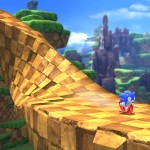
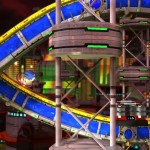
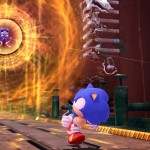
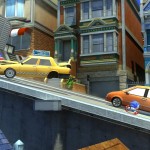
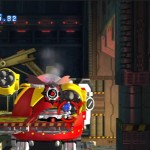
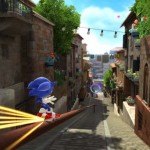
I wouldn’t hold your breath for a bright future but hopefully the can get it right.
Fantastic game! I’m so glad that after all these years SEGA got Sonic right again! The blue blur is back! I can only hope that this is the start of a bright new future for Sonic.